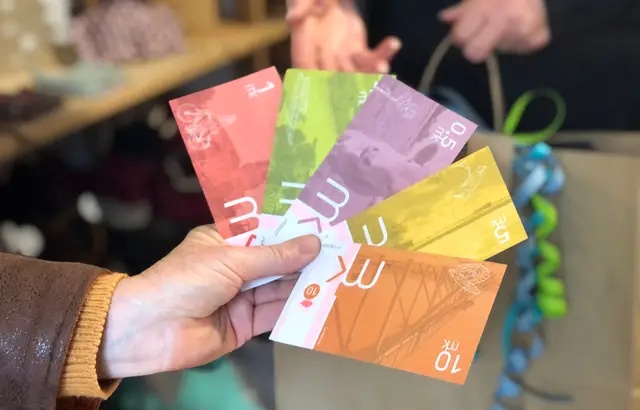Community social currencies for inclusive urban regeneration
CHALLENGES ADDRESSED
Score impact
Nature
Wellbeing
Health
Mobility
Participation
Economy
DESCRIPTION
Social currencies could be created with physical (or virtual) support and managed by a community with the objective of promoting local economy, especially in places where there are vulnerabilities. Its use is voluntary and the purpose is not to replace the official currency or to seek the accumulation or capitalization but they are primarily intended to expand exchanges between people with products of different use value, facilitating exchanges that would hardly occur from direct exchange. The necessary basis for its circulation is the democratic management and the mutual trust relationship. Despite its restricted circulation, this currency may have a political meaning, as it results from a community process of construction and decision, strengthening the symbolic autonomy of the subjects and the communities (Lucas dos Santos and Caitana, 2014 ).

[NBS Card] Community Social Currencies
Social currencies could be created with physical (or virtual) support and managed by a community with the objective of promoting local economy, especially in places where there are vulnerabilities. Its use is voluntary and the purpose is not to replace the official currency or to seek the accumulation or capitalization but they are primarily intended to expand exchanges between people with products of different use value, facilitating exchanges that would hardly occur from direct exchange. The necessary basis for its circulation is the democratic management and the mutual trust relationship. Despite its restricted circulation, this currency may have a political meaning, as it results from a community process of construction and decision, strengthening the symbolic autonomy of the subjects and the communities (Lucas dos Santos and Caitana, 2014 ).
INNOVATION ASPECT
• It’s linked to simple methods for their implementation, with significant effects and changes in the communities;
• The social currencies expand access to goods and services, and to the bonds of mutual trust;
• It alters the local economy with the population’s adhesion and allows to keep wealth into neighborhoods.
REPLICATION AND SCALABILITY
• Adherence to the use of social currencies within the scope of solidarity markets;
• The use of currencies can be expanded in local commerce, going beyond the markets and reaching a larger community.
PARTICIPATION PROCESS

-
1
CO-DIAGNOSTIC
Participants will be able to prepare an action plan. The information brought by the participants and discussed in the collective will help to define the best criteria that apply to the context of the territory.
-
2
CO-DESIGN
The definition of name, use and scope, implies an intense discussion in the collective. Their implementation involves a strong relationship of trust among all.
-
3
CO-IMPLEMENTATION
The social currencies may or may not assume parity with the conventional currency. Its use may occur in different contexts: into the solidarity markets, fairs, or local commerce. It may operate with the possibility to change conventional currency by social currency giving users some kind of advantages (e.g. discount) to stimulate its use.
-
4
CO-MONITORING
The creation of groups for management will be able to assume the monitoring as one of their activities.
BEST PRACTICES and REFERENCES
LINKS:
Currency Mor in Portugal: Currency “Waste” – Campolide. P









